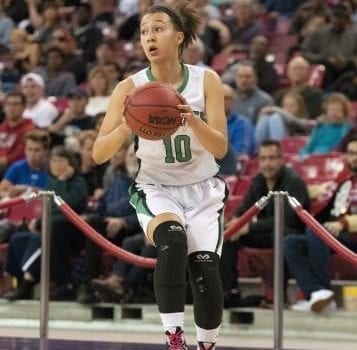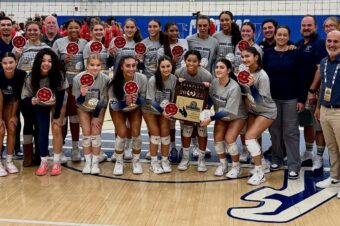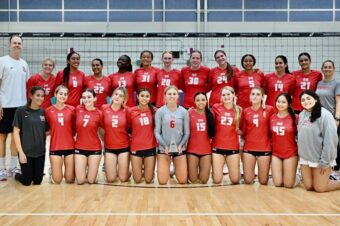

Ball Of Confusion: Trying To Process The Sac-Joaquin Playoff Selection Process
BasketballSac-Joaquin Section October 28, 2016 SportStars 0

Long, long ago, a good high school season meant winning the league championship. There might’ve been some kind of postseason playoff, but basically it was about being the best in your little area.
Obviously, that has changed. Just like professional sports (and of course college sports are professional as well), it’s all about the postseason. How you do in the playoffs is generally the measure of a team. You can stumble along, finish a little above .500, and then get hot during section playoffs, qualify for NorCals, and then win a couple games, and everybody goes home happy.
But what complicates this equation is the fact that California’s 10 sections operate as independent fiefdoms, each with its own rules and regulations, and each with its arcane calculations to determine who goes in postseason.
For example, the Southern Section is a leader in “competitive equity,” which means that teams are assigned to divisions not by their enrollment but rather by their achievements. This resulted in last year’s Division II boys’ state championship game matching 4,500-student Long Beach Poly against Serra-San Mateo, which had fewer than 900 boys enrolled. There’s a lot to be said for the competitive equity model, and most sections are moving in that direction, however slowly “” but it is hard to keep up.
So, since the Sac-Joaquin Section is becoming the regional power in girls’ basketball, it seemed to me like a good idea to find out just how SJS works its postseason. That turned out to be quite a task. Sac-Joaquin director of communications Will DeBoard and I spent close to an hour talking about just how the section playoffs work, and he helped me to try to understand what the latest changes mean for Sac-Joaquin teams, and by extension, all of NorCal.
First, SJS does not have an Open division, which means that teams competing for state championships and Divisions I through IV are all thrown into the same big pot. But how do they get there?
Unlike North Coast Section, where any team with a .500 record overall, in the league, or in its own division, can apply for postseason “” and most will get in “” Sac-Joaquin goes by league performance. There are 16 leagues in the top four divisions, and the top three finishers in each league automatically qualify for postseason. In addition, some leagues get four representatives. And further scrambling the calculation, a school that has more than 600 students but is, for a variety of reasons, assigned to a Division V, VI or VII league will be added to the Divisions I through IV playoff mix if it finishes in the top three in its league.
Simple enough, I guess, but simplicity can only take you so far. Remember that the top four teams in each division qualify for NorCals “” and again, getting to NorCals by itself can make players, coaches parents and fans happy with the season “” so getting to the divisional semifinals is a pretty big deal.
Last year, the system unfortunately matched two of the top teams in Sac-Joaquin in the quarterfinals “” Oak Ridge-El Dorado Hills and McClatchy-Sacramento. The loser was done for the season, while the winner was guaranteed a spot in NorCals.
So a couple of tweaks were made to avoid a similar occurrence, but Sac-Joaquin still does something different once it determines which teams have qualified for the playoffs (and that will be at least 64, and maybe as many as 68 or 70). First, if there are more than 64 teams, out-bracket games are added to each division, in order. So if 65 teams qualify for the playoffs, then there will be 17 teams in the Division I bracket, with one out-bracket game to start the tournament. If 66 teams qualify, then Division II will have an out-bracket game, and so on down the line.
But here’s the kicker: Teams are assigned to regular season divisions and leagues on the basis of both geography and enrollment. Sometimes that means a school with enough students to make it a Division I entry will wind up in a Division II league. Come postseason however, that gets thrown out the window and what happens is this: The 64 (or however many there are) teams are ranked by enrollment. The top 16 are Division I, regardless of what division there league has been all year. That means team 17 could have been in a Division I league, but will be Division II in postseason. It also means that a team that was Division III, say, could wind up in the Division II playoffs. Even more confusing, a school won’t know what division it will be assigned to until the seeding meeting on the Sunday before section playoffs begin.
Now if you’ve wrapped your head around all that, not only will you score very well on the SATs, but you’re going to have to make a further adjustment. Two teams are guaranteed to be Division I this year and next, as long as they qualify for the playoffs. Those two teams are St. Mary’s-Stockton and Brookside Christian-Sacramento, both of which played in the NorCal Open Division last year.
The section added a rule that any team that plays in the Open Division must be Division I the next year, and unless they miss the playoffs entirely, the year after as well. If either Brookside or St. Mary’s does not make the semifinals of the Division I playoffs both of the next two seasons, will they drop down one division.
What’s a little odd about the placement of Brookside Christian is that the school plays in a Division VII league. Since it’s highly unlikely that Brookside will finish lower than third in the league, and thus not qualify for the postseason, Brookside will remain Division I, despite the loss of Ariel McDonald and some other top players to graduation.
And it doesn’t stop there. Five teams are locked into Division II, regardless of enrollment (Del Oro-Loomis, Modesto Christian, Sacramento, Vanden-Fairfield and Wood-Vacaville), and two are Division III-bound (Christian Brothers-Sacramento and Bradshaw Christian-Sacramento).
Now all this may seem like it’s not worth thinking about, since there’s a game to be played on the court, but ask coaches, players, parents and fans what’s important and a significant majority will say that reaching NorCals is a key goal. Somewhere between 16 and 20 Sac-Joaquin teams will advance to NorCals (counting the Open), so that group, plus those who will be battling them for those spots, are very focused on just how the process works.
And we haven’t even gotten into the seeding of those four playoff brackets, which is done by a committee of seven (anonymous) people who not only do girls’ basketball, but also boys’ basketball, football, volleyball and so on. That discussion however is for another time “¦ this has been brain-bending enough.









No comments so far.
Be first to leave comment below.